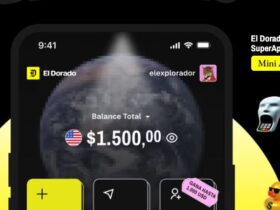Ocean’s new protocol, DATUM, seeks to decentralize bitcoin mining.
Individual miners will be able to build their own block templates on the network.
Ocean Pool, a pool cryptocurrency mining company, announced on X on September 29 the launch of its decentralized mining protocol for bitcoin (BTC) called DATUM, which stands for Decentralized Alternative Templates for Universal Mining in Spanish.
In this way, it ruled out the previously implemented StratumV2 (Sv2), which aims to improve the security of data transfers between miners and pools.
Ocean will employ its new DATUM protocol to allow individual miners have more control over the transactions that are included in the blocksin order to prevent censorship and improve network security.
This initiative primarily aims to return control of building block templates to individual miners using their own Bitcoin node, rather than centralizing control in blockchain operators. pools.

Today, September 30, hours later after Ocean’s announcementthe developer and CTO (chief technology officer or chief technology officer) of this company, Luke Dash Jr, responded in X’s post to some comments from interested users.
Among the responses, some stand out that refer to the possibility of using a practice known as “mining lottery”, which involves solo mining by individuals with mining equipment with very low processing power. This is done hoping to get “lucky” and manage to mine a block on the Bitcoin network to obtain the rewards.
«Datum will allow you to choose your variation threshold. So you can mine only in lottery mode with targets of 0.02 BTC or something similar on OCEAN. If you choose a much higher target, it’s like finding N times more stocks at once, but N times less frequently.
Luke Dash Jr, Chief Technology Officer at Ocean.
Additionally, when asked if DATUM will be an open source protocol, the answer was affirmative and added that “it has the MIT license, the same one used by Bitcoin.”
MIT is a permissive license software free and open source that is widely used in projects softwareincluding Bitcoin Core. This tool allows developers to use, copy, modify, merge, publish, distribute, and interact with a software.
However, it would be valid to highlight that The company did not officially run a comparison between DATUM and Sv2 and that they did a basic analysis in private to justify the decision, according to X user “GrassFedBitcoin”.
What would be the differences between Stratum v2 and DATUM?
In an official Ocean document, the company manifested that DATUM is in an exclusive beta phase with limited access to its information and that They will make the code of this protocol public on October 18, 2024.
It is worth remembering that, both the pool Ocean and Demand were the first to use the Sv2 protocol, as reported by CriptoNoticias at the end of November 2023.
Stratum V2 aims to reduce the infrastructure requirements for mining by improving communication between miners and pools and thus protect them against attacks and manipulations, among others.
While both protocols (Sv2 and DATUM) aim to improve the security of the Bitcoin network, Sv2 focuses more on secure communication, while DATUM aims at security through decentralization.
On the other hand, although Ocean has not thoroughly explained the benefits of its modification, it could be inferred that DATUM requires significant operational changes. This is because it requires that individual miners manage more aspects of mining, which can be complicated for some of them.
How will Datum work to decentralize Bitcoin mining?
The DATUM protocol allows individual miners to build their own block templates (structures that contain the transactions to be included in a network block). In this way, they will be able select the transactions you want to include in the blocksinstead of the operators of pools, favoring the decentralization of the network.
By allowing individual miners to select transactions, the risk of censorship is reduced. In a centralized environment, censorship may be more effective because decisions are in the hands of a few information operators. pools.
DATUM and its management model would help ensure that all valid transactions have the opportunity to be included in the network.
Decentralization in the context of cryptocurrencies means distributing control and decision-making across a wide network of participants, rather than centralizing it in a single entity. This is crucial for maintaining security and censorship resistance on the Bitcoin network, for example.
Financial censorship occurs when a centralized entity has the power to block or reverse transactions. Thus, the decentralization proposed by DATUM seeks to prevent this, ensuring that no entity has absolute control over the network.






Leave a Reply